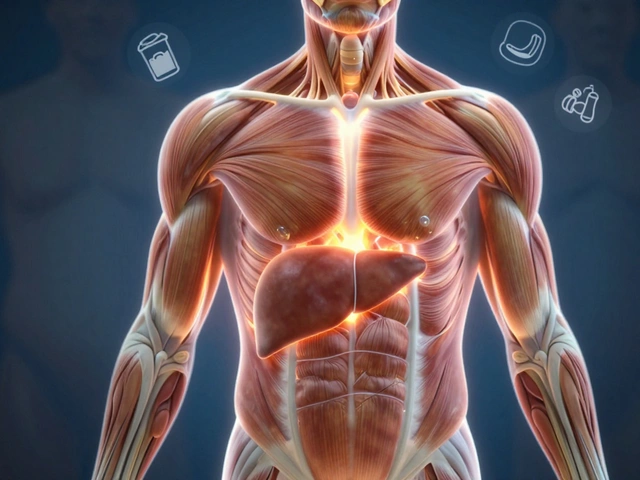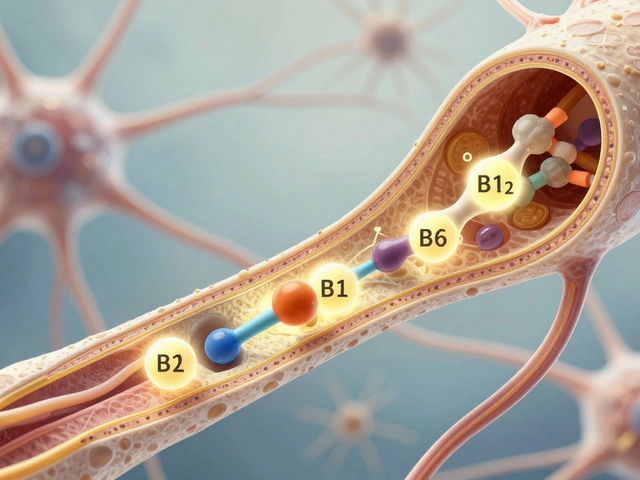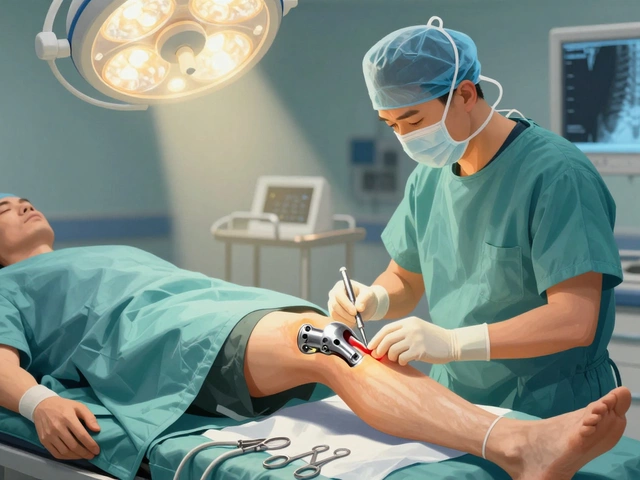When we talk about the 'worst' cancers, we're diving into the real heavyweights of the disease world, where complexity and aggressiveness are off the charts. The statistics alone tell a chilling story, with pancreatic, lung, and liver cancers at the forefront of this battle. They're tough to detect, spread rapidly, and often pose a challenge even with advances in medicine.
Take pancreatic cancer. It's known as the 'silent assassin' because it hides in plain sight, often showing symptoms only when it's too late. Detection is tricky, and treatments like surgery and chemotherapy may not always be effective after it has advanced. Unfortunately, even with its deadly reputation, early-stage symptoms are easy to overlook.
Lung cancer, on the other hand, is a more familiar foe but no less daunting. Often linked to smoking, it can also affect non-smokers and its symptoms sometimes masquerade as common respiratory issues, leading to late diagnosis. Despite the advances in treatment, including targeted therapies and immunotherapies, the five-year survival rate remains staggeringly low.
- Pancreatic Cancer: A Silent Aggressor
- Lung Cancer: The Leading Threat
- Liver Cancer: A Complex Battle
- Advancements in Treatment
- Living with Aggressive Cancers
Pancreatic Cancer: A Silent Aggressor
Among all cancers, pancreatic cancer is one of the trickiest to catch early. It's not dubbed the 'silent aggressor' for nothing. This cancer often sneaks up without any obvious symptoms until it's advanced, making it one of the most lethal types.
Pancreatic cancer affects the pancreas, which sits hidden deep in the abdomen. The vague symptoms like back pain, weight loss, and jaundice crop up when it's usually already advanced. These symptoms can easily be mistaken for other common health issues.
Why Is It So Hard to Detect?
The pancreas plays a crucial role in digestive and hormone functions but doesn't sound any alarms when things start going wrong. By the time symptoms like jaundice or significant weight loss appear, the cancer might already be at an aggressive stage. Regular screening doesn't exist like it does for other cancers because no foolproof tests are available yet.
Who Is at Risk?
- Family history: Genetics can increase your risk if close relatives have had pancreatic cancer.
- Age: Most people diagnosed with this cancer are over 65.
- Lifestyle factors: Smoking, obesity, and chronic pancreatitis contribute to higher risks.
Current Treatment Options
Treating pancreatic cancer often involves a combination of surgery, chemotherapy, and radiation, but it's not one-size-fits-all. Only a small percentage of patients qualify for surgery since the cancer is often detected too late. Even then, removing the tumor is just one part of a challenging journey.
| Stage | 5-Year Survival Rate |
|---|---|
| Localized | 37% |
| Regional | 12% |
| Distant | 3% |
These figures underscore how crucial early detection and innovative treatments are. New research on personalized medicine and targeted therapies brings hope, but we're still in a race against time.
Lung Cancer: The Leading Threat
Lung cancer? It's a beast of a disease that tops the list of the most common and deadly aggressive cancers. It's the leading cause of cancer deaths worldwide. Let's explore why it holds such a fearsome reputation.
Understanding Lung Cancer
Lung cancer sneaks up stealthily. It doesn't always knock with symptoms until it's quite advanced. You might think it's just a pesky cough or a bout of shortness of breath at first. But these benign signs can sometimes signal the looming presence of one of the world's toughest cancers.
Who's at Risk?
The link between smoking and lung cancer is well-established. Cigarette smoke carries harmful chemicals that damage lung tissues, leading to mutations. However, even non-smokers aren't entirely off the hook. Factors like exposure to radon gas, asbestos, and other pollutants can also play a part.
| Risk Factor | Impact |
|---|---|
| Smoking | 25 times more likely |
| Radon Exposure | Leading cause in non-smokers |
Diagnosis and Treatment
Detecting lung cancer isn't as straightforward as we'd like. Usually, it involves imaging tests like X-rays and scans followed by biopsies if needed. When it comes to treatment, a mix of surgery, radiation, and chemotherapy is the traditional approach. But we're seeing promising developments with low-dose CT scans, which can catch it earlier in high-risk groups.
The introduction of targeted therapies and immunotherapies have also added powerful weapons to the arsenal. These treatments identify specific mutations and harness the body's immune system to better combat the cancer cells.
Living With Lung Cancer
Getting diagnosed with lung cancer is a life-altering event. It doesn't just hit physically but mentally too. Support from medical teams, family, and friends is vital in navigating treatment and care paths.
Arming ourselves with knowledge, accessing regular check-ups, and being proactive about symptoms can make a real difference. We're also seeing encouraging survival rates when the disease is caught early, underscoring the importance of advancements in screening and public awareness.

Liver Cancer: A Complex Battle
Liver cancer, unfortunately, is a real test of endurance and medical ingenuity. Why? Because it's incredibly complex to treat, often detected at a late stage. This complexity arises from the liver's immense capacity for regeneration, allowing the cancer to develop without showing overt symptoms until it reaches an advanced stage.
Understanding the Challenge
The liver plays a vital role in detoxifying your blood, digesting food, and storing energy. This means any disruption by a tumor can have widespread effects. The main types of primary liver cancer are hepatocellular carcinoma (HCC) and intrahepatic cholangiocarcinoma. HCC is by far the most common, accounting for about 75% of cases.
Risk Factors
Understanding risk factors is crucial. Chronic infections with hepatitis B or C are major culprits, often leading to cirrhosis over time, which significantly increases cancer risk. Lifestyle factors like excessive alcohol consumption and obesity also play a role, contributing to conditions like non-alcoholic fatty liver disease, which can lead to cancer.
Current Treatment Options
Treatment is tricky and depends heavily on the cancer stage at diagnosis. Options can include surgery, ablation, embolization, targeted therapy, or liver transplant. Surgery offers the best chance for a cure, especially if the cancer is localized. However, many patients aren't eligible for surgery due to the size or location of the tumor, or pre-existing liver damage.
Survival Rates and Recent Advances
Sadly, the five-year survival rate is around 20% for those diagnosed with liver cancer, which underscores the need for better detection and treatment options. On the bright side, advancements are being made with immunotherapy—a treatment that boosts your immune system to fight cancer cells.
| Year | Treatment Advancement | Impact |
|---|---|---|
| 2022 | Approval of immunotherapy drugs | Improved survival rates in clinical trials |
| 2023 | Enhanced liver transplant techniques | Increased eligibility and success rates |
Liver cancer is undeniably a tough opponent but knowing these facts and options can make a difference in how we approach it. With ongoing research and new treatments on the horizon, there’s hope for better outcomes in the future.
Advancements in Treatment
In the race against aggressive cancers like pancreatic cancer, researchers and doctors are tapping into innovative strategies that offer hope. Treatments are evolving, and while it's not an easy journey, these advances are making a real difference for many patients.
Pancreatic cancer remains one of the most complex to tackle. However, new approaches like neoadjuvant therapy, which involves giving chemotherapy or radiation before surgery, are emerging as game changers. This strategy can shrink tumors, potentially making surgery a more viable option for some patients.
Breakthroughs in Lung Cancer
Lung cancer, notorious for its link to smoking, is seeing promising results from targeted therapies. These treatments are designed to attack specific mutations in cancer cells, offering personalized options. For instance, drugs like osimertinib are showing effectiveness in targeting certain genetic markers.
Additionally, immunotherapy, which boosts the body's immune system to fight the cancer, is gaining traction. Drugs like pembrolizumab have been approved for use in various lung cancer stages, providing a new line of defense.
Liver Cancer Innovations
Liver cancer treatments are also experiencing a surge with the development of immunotherapy drugs like nivolumab. These therapies, often used in combination with traditional treatments, provide new ways to conquer this stubborn disease. The advent of radiologic methods such as radiofrequency ablation and transarterial chemoembolization (TACE) are also becoming more effective in managing liver tumors.
State-of-the-Art Strategies
Across the board, precision medicine is reshaping how we tackle these aggressive cancers. With access to genetic information, doctors can tailor treatment plans more accurately. It’s like finding the right key for a lock, optimizing treatment outcomes.
While challenges remain, every small victory in research is a step towards better management and cure. For patients and families facing these daunting diagnoses, these advancements are more than just medical lingo—they’re lifelines.

Living with Aggressive Cancers
Dealing with aggressive cancers like pancreatic, lung, and liver cancer is nothing short of challenging. Patients often face a rollercoaster journey that involves not just the physical aspects, but emotional and psychological ones too. Here, we explore some practical strategies and insights to navigate this tough experience.
Understanding Your Diagnosis
First things first, getting a clear understanding of your diagnosis is crucial. Have open conversations with your healthcare team. Don’t hesitate to ask questions until you’re clear about the type of cancer, its stage, and available treatment options. Knowledge is power, and being informed helps in making decisions that feel right for you.
Seeking Support
Support is key during this journey. Whether it’s leaning on family, joining a cancer support group, or speaking to a counselor, having people who understand what you’re going through can make a huge difference. Online forums and local groups are great places to find fellow patients and caregivers who can offer advice and comfort.
Managing Treatment Side Effects
Treatments like chemotherapy and radiation come with side effects that can be tough to handle. Work closely with your doctors to manage these. Sometimes, simple adjustments in diet, like staying hydrated and eating small, frequent meals, can help. Always report new symptoms to your healthcare provider.
Navigating Daily Life
Everyday life doesn’t stop, and going through cancer treatment often requires adjustments. Rest is crucial, but so is finding ways to maintain a routine. Whether that's a short walk, a hobby, or just spending time with loved ones, these activities provide a sense of normalcy and control.
There are practical matters to consider as well. Financial concerns are common, so explore options like talking to a financial counselor, applying for aid programs, or even reaching out to local non-profits for assistance.
Staying Hopeful and Informed
Through all of this, staying hopeful can be a powerful ally. New treatments and research are ongoing, and staying updated with the latest advancements can bring fresh optimism. Clinical trials are worth discussing with your doctor, as they may provide access to new therapies.
Living with aggressive cancers is challenging, but you're not alone, and there are plenty of resources to help you through it. Courage and resilience are great companions on this journey.









